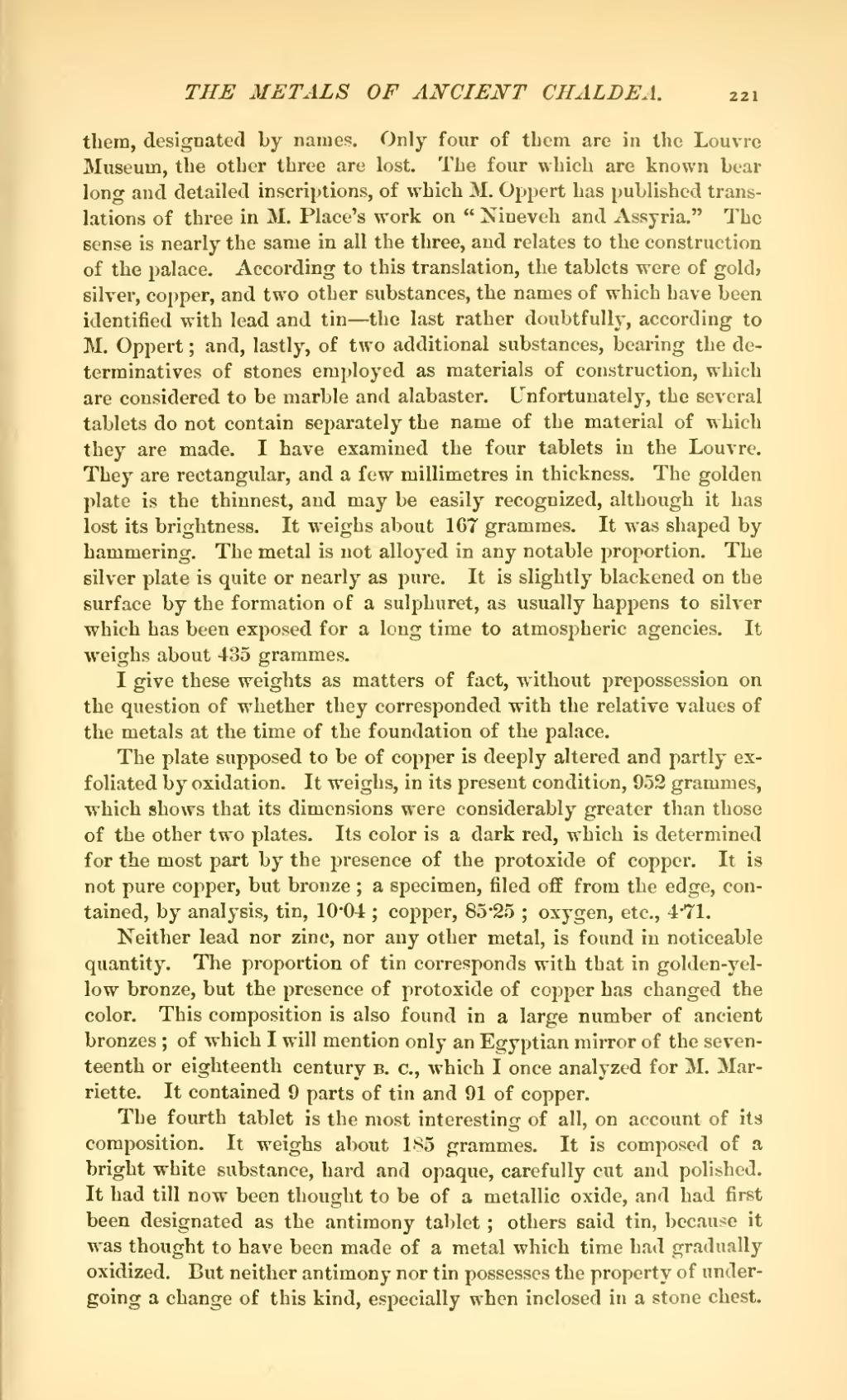them, designated by names. Only four of them are in the Louvre Museum, the other three are lost. The four which are known bear long and detailed inscriptions, of which M. Oppert has published translations of three in M. Place's work on "Nineveh and Assyria." The sense is nearly the same in all the three, and relates to the construction of the palace. According to this translation, the tablets were of gold> silver, copper, and two other substances, the names of which have been identified with lead and tin—the last rather doubtfully, according to M. Oppert; and, lastly, of two additional substances, bearing the determinatives of stones employed as materials of construction, which are considered to be marble and alabaster. Unfortunately, the several tablets do not contain separately the name of the material of which they are made. I have examined the four tablets in the Louvre. They are rectangular, and a few millimetres in thickness. The golden plate is the thinnest, and may be easily recognized, although it has lost its brightness. It weighs about 167 grammes. It was shaped by hammering. The metal is not alloyed in any notable proportion. The silver plate is quite or nearly as pure. It is slightly blackened on the surface by the formation of a sulphuret, as usually happens to silver which has been exposed for a long time to atmospheric agencies. It weighs about 435 grammes.
I give these weights as matters of fact, without prepossession on the question of whether they corresponded with the relative values of the metals at the time of the foundation of the palace.
The plate supposed to be of copper is deeply altered and partly exfoliated by oxidation. It weighs, in its present condition, 952 grammes, which shows that its dimensions were considerably greater than those of the other two plates. Its color is a dark red, which is determined for the most part by the presence of the protoxide of copper. It is not pure copper, but bronze; a specimen, filed off from the edge, contained, by analysis, tin, 10·04; copper, 85·25; oxygen, etc., 4·71.
Neither lead nor zinc, nor any other metal, is found in noticeable quantity. The proportion of tin corresponds with that in golden-yellow bronze, but the presence of protoxide of copper has changed the color. This composition is also found in a large number of ancient bronzes; of which I will mention only an Egyptian mirror of the seventeenth or eighteenth century b. c., which I once analyzed for M. Marriette. It contained 9 parts of tin and 91 of copper.
The fourth tablet is the most interesting of all, on account of its composition. It weighs about 185 grammes. It is composed of a bright white substance, hard and opaque, carefully cut and polished. It had till now been thought to be of a metallic oxide, and had first been designated as the antimony tablet; others said tin, because it was thought to have been made of a metal which time had gradually oxidized. But neither antimony nor tin possesses the property of undergoing a change of this kind, especially when inclosed in a stone chest.
